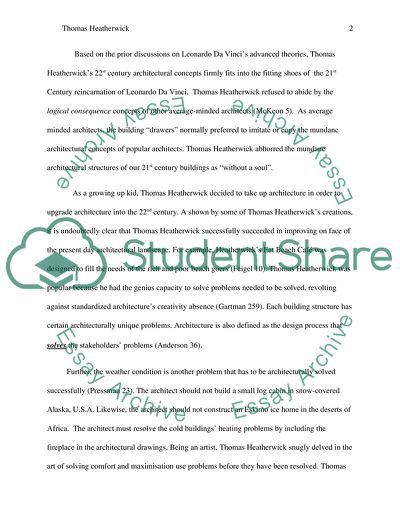Cite this document
(Thomas Heatherwick: The Da Vinci of Our Times or Solving Problems that Essay Example | Topics and Well Written Essays - 1250 words, n.d.)
Thomas Heatherwick: The Da Vinci of Our Times or Solving Problems that Essay Example | Topics and Well Written Essays - 1250 words. https://studentshare.org/architecture/1806624-thomas-heatherwick-the-da-vinci-of-our-times-or-solving-problems-that-dont-need-solving
Thomas Heatherwick: The Da Vinci of Our Times or Solving Problems that Essay Example | Topics and Well Written Essays - 1250 words. https://studentshare.org/architecture/1806624-thomas-heatherwick-the-da-vinci-of-our-times-or-solving-problems-that-dont-need-solving
(Thomas Heatherwick: The Da Vinci of Our Times or Solving Problems That Essay Example | Topics and Well Written Essays - 1250 Words)
Thomas Heatherwick: The Da Vinci of Our Times or Solving Problems That Essay Example | Topics and Well Written Essays - 1250 Words. https://studentshare.org/architecture/1806624-thomas-heatherwick-the-da-vinci-of-our-times-or-solving-problems-that-dont-need-solving.
Thomas Heatherwick: The Da Vinci of Our Times or Solving Problems That Essay Example | Topics and Well Written Essays - 1250 Words. https://studentshare.org/architecture/1806624-thomas-heatherwick-the-da-vinci-of-our-times-or-solving-problems-that-dont-need-solving.
“Thomas Heatherwick: The Da Vinci of Our Times or Solving Problems That Essay Example | Topics and Well Written Essays - 1250 Words”. https://studentshare.org/architecture/1806624-thomas-heatherwick-the-da-vinci-of-our-times-or-solving-problems-that-dont-need-solving.


